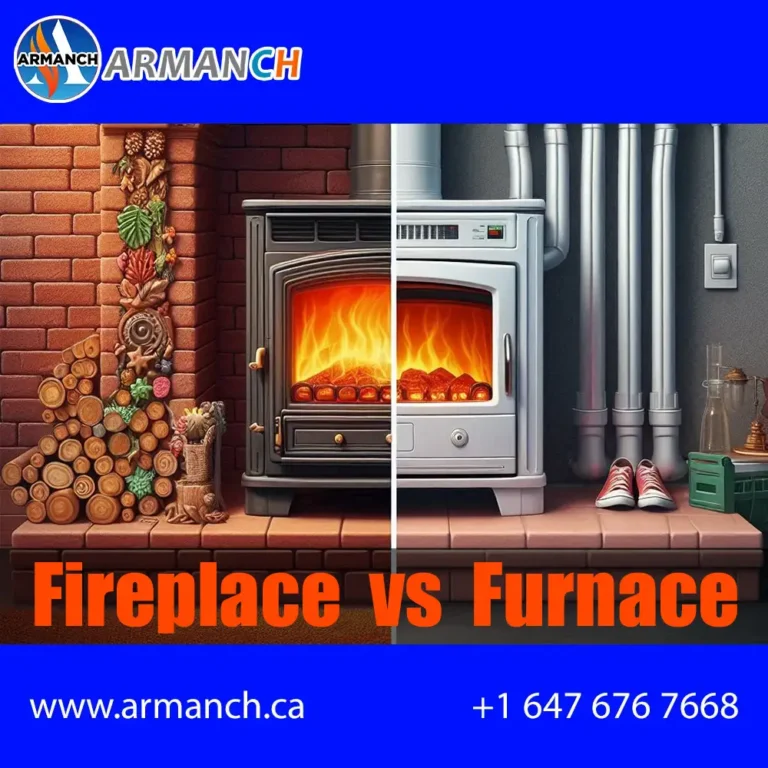
What is difference between furnace and fireplace ?
Fireplace vs. Furnace
A fireplace is a designated structure crafted to contain a fire for warmth and ambiance. It is commonly found in living rooms or family rooms and can burn various fuels such as wood, gas, or others. Fireplaces are often constructed using materials like brick, stone, or metal. While they contribute to heating, their primary purpose is to provide a cozy atmosphere and supplemental heat to a specific room.
A furnace is a heating system that employs fuel, electricity, or another energy source to heat air. This heated air is then distributed throughout a building using a network of ducts. Furnaces are typically located in basements or utility rooms and serve as the primary source of heat for an entire home. Unlike fireplaces, furnaces are designed for comprehensive heating rather than localized warmth.

Running HVAC with a Fireplace
While it is possible to run a Heating, Ventilation, and Air Conditioning (HVAC) system simultaneously with a fireplace, it may not always be efficient. The HVAC system and the fireplace can create a conflict if they supply heat to the same space. This can lead to discomfort and potential energy wastage. However, with careful planning, such as directing HVAC heat to other areas of the home, they can complement each other effectively.
Fireplace Ventilation
Fireplace ventilation is essential for safe and efficient operation. The key components include:
- Chimney: A vertical structure providing a pathway for smoke to exit
- Draft: Airflow created by pressure differences, facilitating smoke movement
- Combustion Air: Fresh air drawn into the fireplace to support efficient combustion
- Dampers: Adjustable plates controlling air flow through the chimney

In some cases, it may be possible to run the HVAC system in a way that complements the fireplace. For example, if the HVAC system is designed to supply heat to other parts of the home, such as bedrooms or a basement, while the fireplace provides heat to the living room, the two systems can work together to provide comfortable temperatures throughout the home.
It is important to note that using a fireplace can also affect indoor air quality. Burning wood or other fuels can produce smoke, particulates, and other pollutants, which can be harmful to respiratory health. It is important to ensure that the home’s ventilation system is properly designed and maintained to mitigate any potential negative effects on indoor air quality.
Fireplace and Air Conditioning
A fireplace can impact air conditioning in several ways:
Increased Load: If the fireplace heats a room, the thermostat may trigger the air conditioning to counteract the temperature rise, leading to increased energy usage.
Indoor Air Quality: Burning fuels can produce pollutants, potentially affecting air quality and the efficiency of air filters.
Air Leaks: Poorly designed fireplaces may contribute to air leaks, reducing air conditioning efficiency.
Is a Fireplace a Heating System ?
While a fireplace provides heat, it is not typically a primary heating system for homes. It is designed for localized warmth and ambiance, serving as a supplemental heat source. Primary heating systems, like furnaces or boilers, are more efficient and capable of providing consistent warmth throughout the entire home.
- HVAC-R
- Design and Permit Services
- Hydronic & Hot Water Services
- Heating and Cooling Services
- Air Conditioning Services





